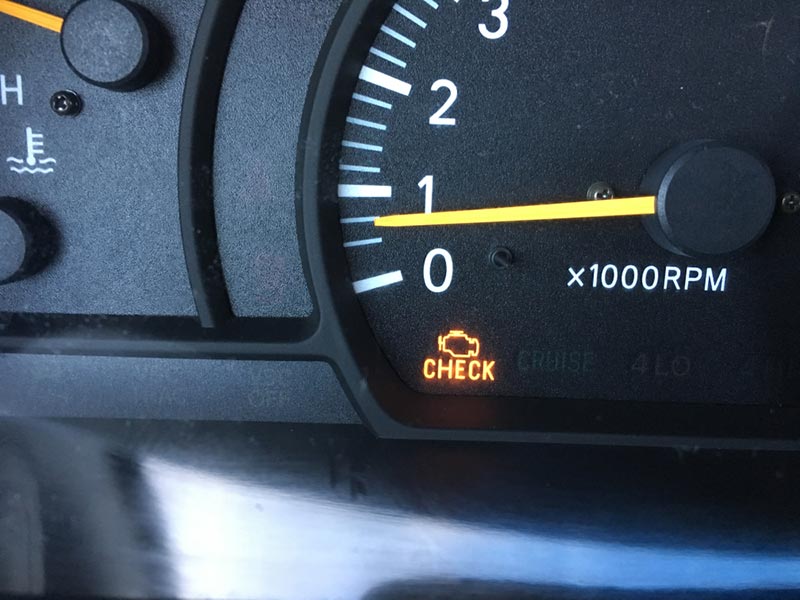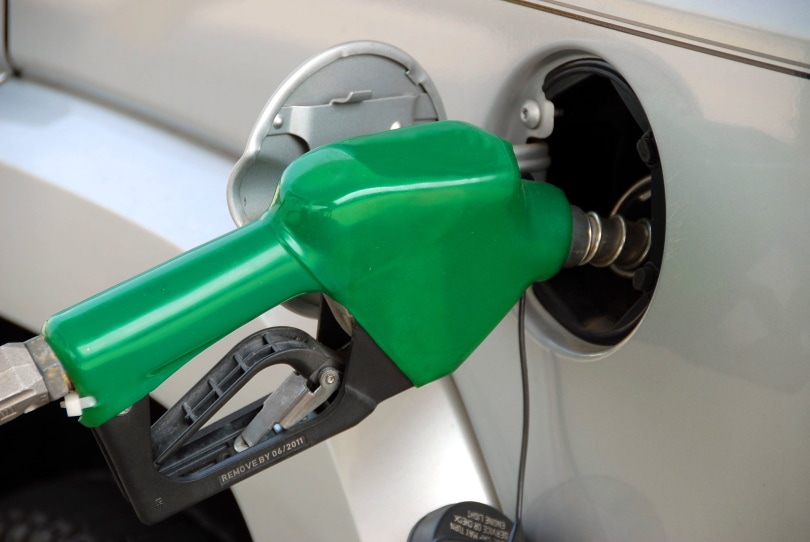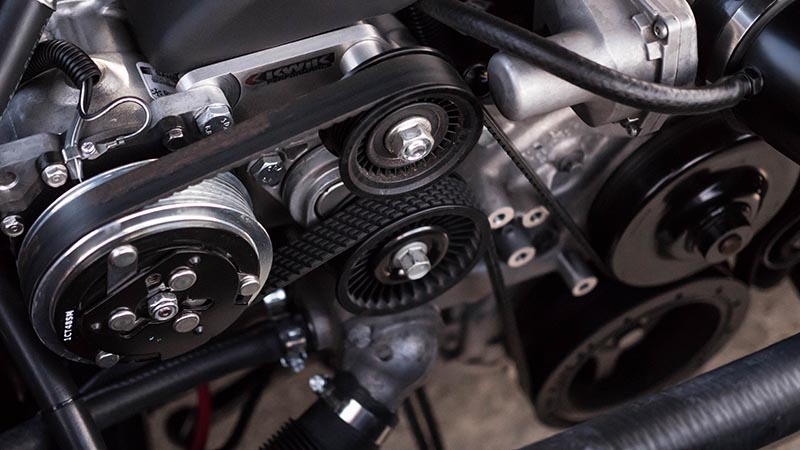What Is a GDI Engine? How Does It Work?
-
Pete Ortiz
- Last updated:

In the quest to peel off from one type of engine, car manufacturers diversified to gasoline direct injection (GDI) or petrol direct injection (PDI). It is a special engine whose popularity grew in the 2000s after being invented by Dr. Archibald Montgomery Low in 1912 and misleadingly named a forced induction engine. The small four-stroke motorcycle engine had a small rotary valve that pushed fuel directly into the cylinder at over 1000 psi during “high compression.”
During WW2, both German and Allied used GDI engines such as the BMW 801 and Junkers Jumo 213, respectively. Mitsubishi later applied the technology on a large scale before exporting it to Europe.
Having gone through the interesting history of GDI engines, let us learn how they work, their advantages and disadvantages, and answer a few FAQs.
How Does a GDI Engine Work?
A GDI’s unique design entails injecting pressurized fuel directly into combustion cylinders by a nozzle. It is different from common gasoline engines, which receive an air-fuel mixture from the carburetor or use the manifold injection system. How the engines convert chemical energy into mechanical energy is the same nonetheless.
When you fuel up the car, gasoline flows under low pressure generated by the fuel pump through the fuel lines all the way to the engine. This is where the anatomy of different gasoline engines changes. While the fuel from other engines flows directly into the carburetor, in GDI, a high-pressure cam-driven pump sucks it in. It charges fuel into high-pressure lines all the way to direct injectors.
Injectors then spray a uniform jet of fuel into the cylinders. At precise timing, intake valves corresponding to the position of other pistons open to let in clean air. The mixture is then compressed up to 9 times its original volume before being ignited by a spark plug.
In many GDI designs, a spark plug is located between the intake and exhaust valves. As gasses expand under high temperatures, the intense pressure inside the cylinder pushes the piston downwards. The resulting force rotates the camshaft. At the end of the combustion cycle, exhaust valves open to let out exhaust gasses.
However, before the ignition, the liquid state of fuel from injectors is converted to a gaseous state by hot cylinder walls.
What Are the Different Types of GDI Engines?
GDI engines can be broadly classified according to charge and injection modes.
Charge Modes
Charge mode is basically how fuel and air are distributed in the cylinder.
1. Homogeneous charge mode

In this mode, the engine operates with an almost perfect air-fuel mixture. To obtain the homogeneous mixture, fuel is injected at the beginning of the intake stroke. As the piston moves down to create more volume, it forms a partial vacuum that sucks in the air and whirls it around to mix it with gasoline.
The model has a three-way catalyst to convert toxic exhaust into less toxic gasses before releasing them into the environment.
The major advantage of homogeneous charge mode is that it has slightly higher compression power compared to conventional engines. It is also very practical for manufacturers wishing to downsize engines.
2. Stratified charge mode
Within the stratified charge mode cylinder, the fuel-air mixture is not uniform and is divided into several zones. A small, rich fuel-air mixture concentrates around the spark plug, while the remaining parts around the walls are mostly air. This allows the engine to use extra lean mixtures, which will be impossible in carburetors, thus saving fuel.
To create different stratum and ensure areas around the spark plug have a combustible fuel-air mixture, the engine injects fuel at the later stage of the compression cycle. A swirling effect as a result of the cycle concentrates more fuel around the spark plug.
Theoretically, the engine is claimed to be more efficient and releases fewer exhaust gasses. But little evidence confirms this practically.
In addition, lean burning releases more nitrogen oxides and particulate matter, which must be absorbed by NOx absorbers or filtered away by particulate filters to meet emission requirements—the main reasons some car manufacturers, especially in Europe, are abandoning stratified charge mode.
Injection modes
These are techniques in which the desired fuel distribution is achieved inside the cylinder.
3. Wall-guided direct injection

At the epicenter of a cylinder using a wall-guided direct injection technique is a swirl chamber. It has flaps that uniformly mix air and fuel and provide the surface for fuel to attach to in wall-guided injection. Swirl flaps together with tumble air intake ports change air dynamics into a special swirl to push all the fuel around the spark plug.
When switching from low load to high load, altering the rhythmic nature of injection timing, fuel may be injected behind the swirl chamber. This results in incomplete combustion translating to high hydrocarbon emissions and less power.
4. Air-guided direct injection
In this engine, the injection nozzle and spark plug share the same space between the intake and exhaust valves. Thus the distance between them is very short.
Unlike wall-guided, fuel in air-guided technique does not come into contact with cylinder walls, instead sprayed in the swirl cavity. The fuel is then guided to the spark plug by air from the intake valve.
Relying on intake air to push fuel closer to the spark plug reduces charging frequency, efficiency, and power output.
5. Spray-guided direct injection

This is the most common injection technique exploring the benefits of both homogeneous and stratified charge modes. Like air-guided plugs, the spray-guided plugs adopt the narrow spacing approach, and the space between valves is limited.
This geometric restriction targets the space between the plug’s electrodes to provide it with a rich mixture that will result in stable combustion.
You should note that the combustion process starts immediately after injection. Failure of the spark plug to utilize the narrow window of time before the fuel diffuses away may result in misfiring.
Where Is It Used?
It is no surprise that car makers are the top consumers of GDI engines. Mitsubishi was the first to mass produce the engine in 1996, followed by Toyota before European countries got wind of the new engine.
Ever cautious American car moguls did not pursue the idea aggressively because gasoline was relatively cheap in the early 2000s. Ford and General Motors changed this drastically, and GM’s Ecotec engine is now a staple on its lineups.
Ford pledged to produce over 2.5 million vehicles on the EcoBoost GDI engine between 2009 and 2014, most of which will be equipped on Lincoln MKS and Taurus.
What is unknown is if the engine will make the big leap to hybrid cars.
 Advantages of the GDI Engine
Advantages of the GDI Engine
Churn Out More Power
A GDI engine produces more power in two ways;
Removing carburetors along the fuel lines and directly injecting gasoline into the combustion chamber in a controlled and timely manner results in powerful explosions.
In many instances, a GDI’s engine is colder, increasing the compression ratio, which means you will obtain more power from a few drops of fuel.
Achieve a High Compression Ratio
GDI engines run at high static compression ratios. The static compression ratio is the air-fuel mixture in the combustion chamber. By constantly reducing the amount of fuel that is trapped around the piston, GDI engines improve combustion efficiency.
High combustion efficiency allows the engine to run impressively on lean air-fuel mixtures. The mixture can be as lean as 40:1!
Reduce Fuel Wastage
GDI engines have 15% to 20% better fuel economy than multi-point fuel injection systems. Thanks to the high compression ratio, taking in more air to support complete combustion and minimizing leakages, the engine conserves a lot of fuel.

Good on the Environment
GDI engine technology uses precision components that monitor the amount of fuel injected into the combustion chamber. If the engine is running on more gasoline, the injector pulse automatically adjusts fuel input. And since these engines use small doses of fuel efficiently, the emissions are minimum.
No Throttle Loss = More Power
The engine breathes in and out as we do. If you block airways, you will need more energy to breathe. This extra energy required to take in fuel-air mixtures from a carburetor to control torque is called throttle loss.
GDI engines control torque by varying air intake and overriding throttle loss common in standard engines.

Disadvantages of GDI Engines
Accumulation of Carbon Deposits
The major disadvantage of GDI engines is carbon deposits. Since gasoline is injected directly into the combustion chamber, carbon deposits settle on the components within and around the chamber.
Firstly, the carbon deposits may settle around the intake valves. The carbon buildup clogs the valves, thus restricting airflow and limiting the amount of fuel that goes into the chamber.
Secondly, carbon deposits may damage the turbine fins of the engine’s turbocharger. The turbocharger is responsible for filtering and compressing the air that flows into the combustion chamber. Once carbon deposits damage the turbocharger, it stops compressing air, thereby interfering with combustion.
In addition, the carbon deposit acts as an insulator that traps heat within the engine. The increasing temperature will damage loosened valves or damage some parts. The layer of carbon deposit may also cause wear and tear to the moving parts.
Does Not Optimize the Fuel-Air Mixture
GDI engines rarely allow fuel and air to mix optimally because of the formation of strata before being ignited.
Clogging Is Common
Finally, GDI engines experience fuel system clogging caused by carbon buildup. Once the fuel system is blocked, the engine may stall and/or lose power altogether.
GDI Frequently Asked Questions
Do GDI Engines Need Frequent Cleaning?
GDI engines are prone to carbon buildup due to a lack of fuel wash effects. Fuel wash is a helpful but potentially destructive condition caused by over-fueling when the engine fails to start. Excess fuel washes away oil and carbon pistons, cylinder walls, and valves.
In GDI engines, because fuel is sprayed directly into the cylinder, carbon from combustion starts forming at the back of the valves, which chokes off engine power.

How Do You Clean a GDI Engine?
Frequent cleaning of the valves saves you from expensive maintenance costs in the long run. This is quickly achieved by aerosol system intake cleaners, which have similar cleaning properties as gasoline.
Simply spray the aerosol cleaner at the back of the intake valve and wait for an hour before driving off. The spray dissolves over 50% of the carbon, and as you drive, the valve movement will remove more dirt.
Which Fuel Is Better for a GDI Engine?
High octane premium fuel is good for a GDI engine. The fuel packs enough energy to produce higher compressions than the engine is designed to.
How Long Does a GDI Engine Last?
A car engine can last over eight years or complete over 150,000 miles, or circle around the equator six times.
The GDI’s high compression often strains most engine parts, limiting their lifespan to around 100,000 miles. But with proper maintenance, it can live longer.
Can a GDI Engine Perform Better With Synthetic Oil?
Premium full synthetic oil has special additives that will lubricate and clean the engine, promising superior drives throughout the engine’s life.
Are GDI Engines Noisy?
All engines rev out some noise from piston movements. With the use of high-pressure nozzles, a GDI may produce uncomfortable noises.
Conclusion
A GDI is a cost-saving and highly efficient engine whose gasoline is pumped directly into the piston chamber by nozzles. The nozzles are supplied by high-pressure lines from a cam-driven pump. At the beginning of the working cycle, nozzles spray in fuel, air valves open to let in air, and the piston compresses. A spark plug then ignites the mixture.
The engine is classified according to charge or injection modes. Both imply how nozzles distribute fuel in the cylinder to form a homogeneous mixture or stratum. Other than the accumulation of carbon behind intake valves and a few incomplete combustion issues, the engine is very efficient and powerful.
See also:
Featured Image Credit: otomobil, Shutterstock
Contents


